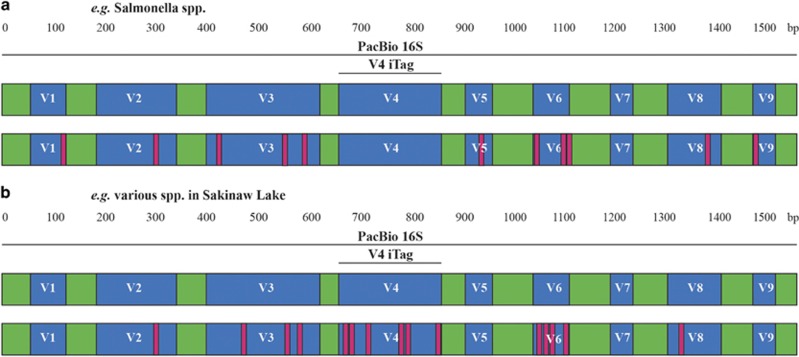Figure 3.
Conceptual representation of the 16S rRNA gene sequence with conserved (green) and hypervariable (blue) regions. Pink strips represent the abundance of mutations in respective variable regions. Target selection in amplicon sequencing determines community fingerprints. (a) The 16S rRNA gene variability is not homogeneous across taxonomic groups and subregions of the FL sequence. For example, Salmonella spp. are 97.4% identical across the FL 16S rRNA gene sequence, but are 100% identical across the V4 region. (b) In other instances, exclusively considering the hypervariable V4 region may lead to an overestimation of community diversity because mutations may accumulate here more than across the entire 16S rRNA gene.

